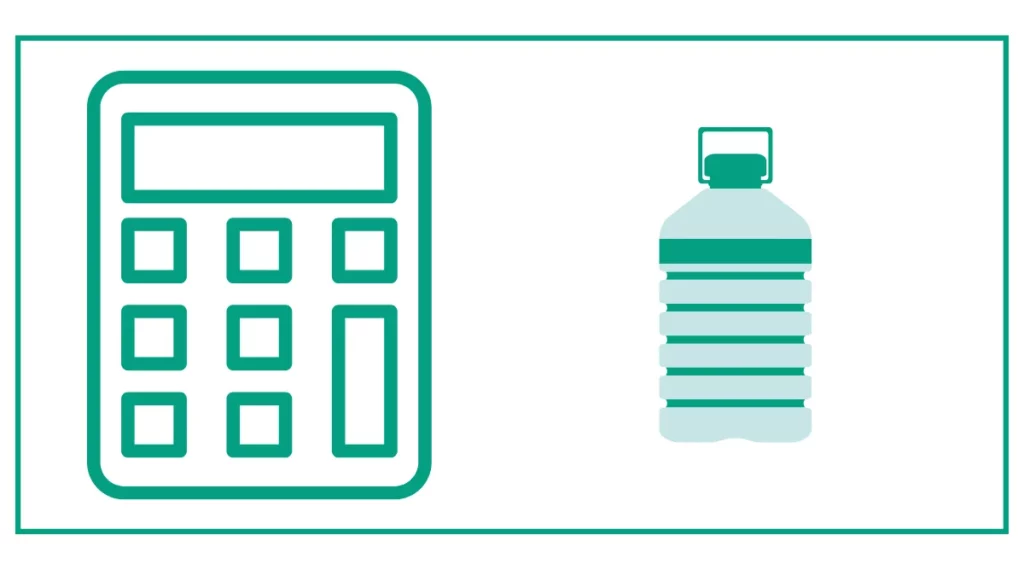GPM Calculator (Gallons Per Minute)
The Gallons per minute calculator helps you calculate the volume, time, and flow rate.
Enter the volume and flow rate if you want to figure out the time.
Enter the time and flow rate to calculate the volume.
If you want to figure out the flow rate, enter the volume ( in US gallons) and time in seconds.
In case you don’t know, the rate of flow of water in gallons per minute is defined as GPM.
GPM = volume/time
This calculator is helpful in determining how much time will it take to fill the batch tub or a container.

You might be interested in finding the number of items you can fit in an electrical box or rebar quantity.
What is GPM and Why is it Important?
GPM, or gallons per minute, is a unit of measurement used to express the flow rate of liquids, especially water. It indicates the volume of liquid that passes through a given point in a system over the course of one minute. Understanding GPM is essential for:
- Plumbing systems
- Irrigation and landscaping
- Industrial processes
- Water treatment facilities
- Pump selection and sizing
Accurate GPM calculations are crucial for ensuring efficient water usage, proper system design, and optimal performance in various applications.
How to Use the GPM Calculator
Our GPM calculator is designed to be user-friendly and versatile. It allows you to calculate one of three variables: volume, time, or flow rate, based on the other two inputs. Here’s a step-by-step guide on how to use the calculator:
- Identify which two variables you know and which one you need to calculate.
- Enter the known values in the appropriate fields:
- Volume (US gal): The amount of liquid in US gallons
- Time (sec): The duration in seconds
- Flow rate (US gal/min): The rate of flow in gallons per minute
- Leave the field you want to calculate empty.
- Click the “Calculate” button.
- The result will be displayed below the calculator.
Example 1: Calculating Flow Rate
Let’s say you want to determine the flow rate of a garden hose. You know that it takes 30 seconds to fill a 5-gallon bucket. Here’s how you’d use the calculator:
- Enter 5 in the “Volume (US gal)” field.
- Enter 30 in the “Time (sec)” field.
- Leave the “Flow rate (US gal/min)” field empty.
- Click “Calculate.”
The calculator will show: Flow rate: 10.00 US gal/min
This means your garden hose has a flow rate of 10 GPM.
Example 2: Determining Fill Time
Suppose you have a 500-gallon tank and a pump with a flow rate of 20 GPM. To find out how long it will take to fill the tank:
- Enter 500 in the “Volume (US gal)” field.
- Enter 20 in the “Flow rate (US gal/min)” field.
- Leave the “Time (sec)” field empty.
- Click “Calculate.”
The result will show: Time: 25.00 min
This indicates it will take 25 minutes to fill the tank.
Understanding Flow Rate Calculations
The basic formula for calculating flow rate is:
Flow Rate (GPM) = Volume (gallons) / Time (minutes)
This formula can be rearranged to solve for volume or time:
Volume (gallons) = Flow Rate (GPM) × Time (minutes)
Time (minutes) = Volume (gallons) / Flow Rate (GPM)
Our calculator automatically applies the appropriate formula based on the inputs provided, making it easy to solve for any of the three variables.
Factors Affecting Flow Rate
Several factors can influence the flow rate in a system:
- Pipe diameter: Larger pipes generally allow for higher flow rates.
- Pressure: Higher pressure typically results in increased flow rates.
- Pipe length and configuration: Longer pipes and more bends can reduce flow rates due to friction.
- Fluid viscosity: Thicker fluids flow more slowly than thinner ones.
- Elevation changes: Uphill flow requires more energy and may reduce flow rates.
Applications of GPM Calculations
GPM calculations have numerous practical applications across various industries and everyday situations:
Plumbing and Water Supply
In residential and commercial plumbing, GPM calculations help determine:
- Proper pipe sizing for different fixtures
- Water pressure requirements
- Pump selection for well systems or water features
Irrigation Systems
For landscaping and agriculture, GPM is essential for:
- Designing efficient sprinkler systems
- Determining water requirements for different crops
- Scheduling irrigation cycles
Industrial Processes
Many industries rely on accurate flow rate measurements for:
- Chemical mixing and dosing
- Cooling system design
- Production line efficiency
Water Treatment
GPM calculations are crucial in water treatment facilities for:
- Sizing filtration systems
- Determining chemical dosing rates
- Managing water distribution
Converting Between Flow Rate Units
While GPM is a common unit for flow rate, you may encounter other units in different contexts. Here are some useful conversions:
- GPM to Gallons Per Hour (GPH):
GPH = GPM × 60 - GPM to Liters Per Minute (LPM):
LPM = GPM × 3.78541 - GPM to Cubic Feet Per Second (CFS):
CFS = GPM × 0.002228
Tips for Accurate GPM Measurements
To ensure the most accurate GPM calculations and measurements:
- Use calibrated flow meters when possible.
- Take multiple measurements and calculate an average.
- Consider factors like pressure and temperature that may affect flow rates.
- Regularly maintain and clean your plumbing or fluid systems to prevent obstructions that could alter flow rates.
- Be aware of seasonal variations that might impact water pressure and flow rates, especially in outdoor applications.
Common Pitfalls in GPM Calculations
When working with GPM calculations, be mindful of these common mistakes:
- Confusing units (e.g., mixing gallons and liters)
- Neglecting to account for pressure changes in a system
- Overlooking the impact of pipe fittings and bends on flow rates
- Assuming constant flow rates in systems with variable demands
FAQs
Can this calculator be used for liquids other than water?
While the calculator is primarily designed for water, it can be used for other liquids with similar viscosity. However, for fluids with significantly different properties, additional factors may need to be considered for accurate results.
How does pipe size affect GPM?
Pipe size directly impacts flow rate. Larger diameter pipes generally allow for higher GPM, while smaller pipes restrict flow. The relationship is not linear, and other factors like pressure also play a role.
What’s the difference between GPM and PSI?
GPM (gallons per minute) measures flow rate, while PSI (pounds per square inch) measures pressure. Both are important in understanding fluid dynamics, but they measure different aspects of a system.
can I increase the GPM in my plumbing system?
Increasing GPM can be achieved by increasing water pressure, using larger diameter pipes, reducing pipe length or bends, or installing a more powerful pump. However, it’s important to ensure your system can handle increased flow rates safely.
Is a higher GPM always better?
Aot necessarily. The ideal GPM depends on the specific application. Too high a flow rate can lead to water waste, increased energy costs, or even damage to plumbing fixtures and pipes.
References
- Trimmer, W. L. (1994). Estimating water flow rates.





